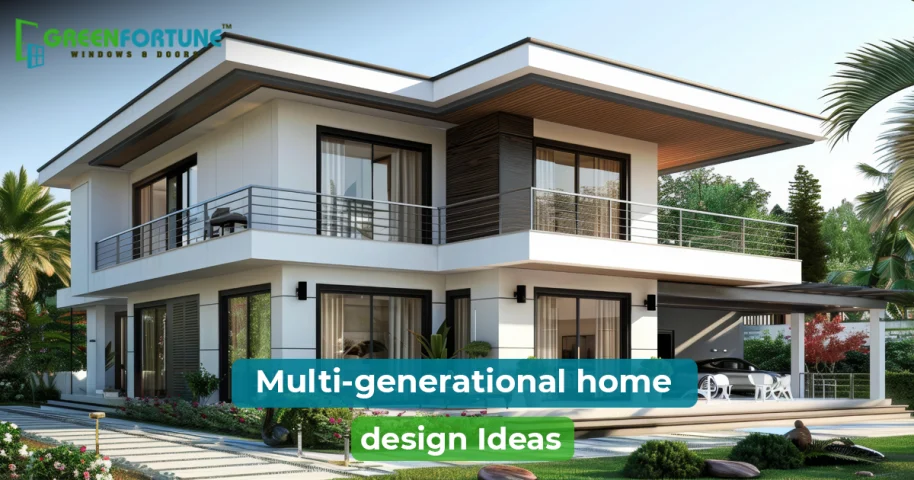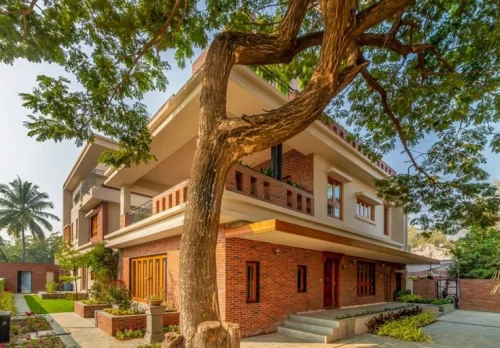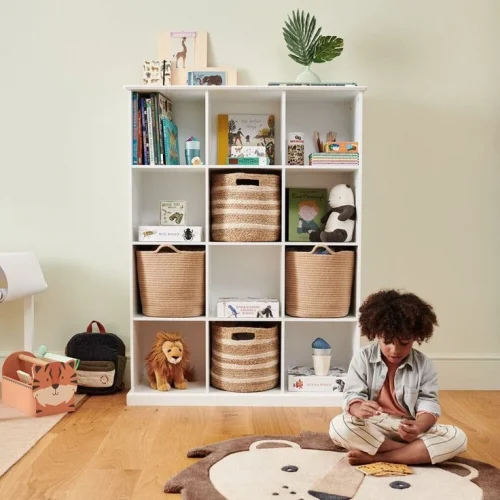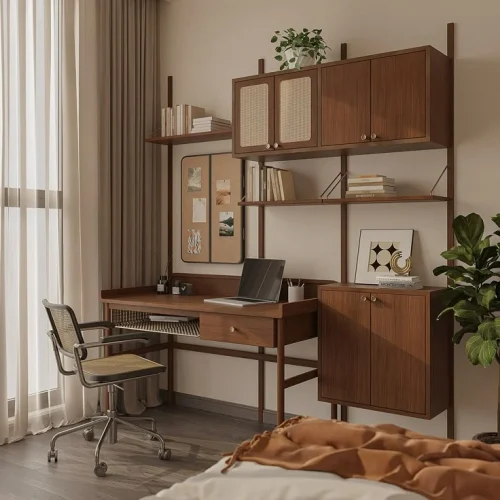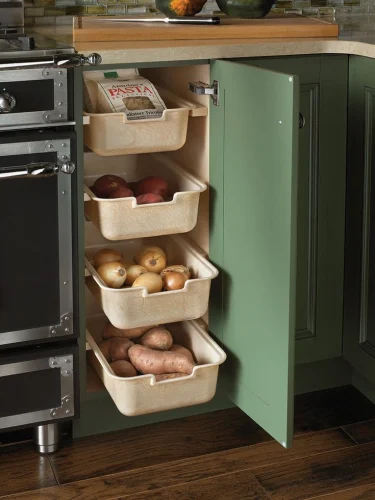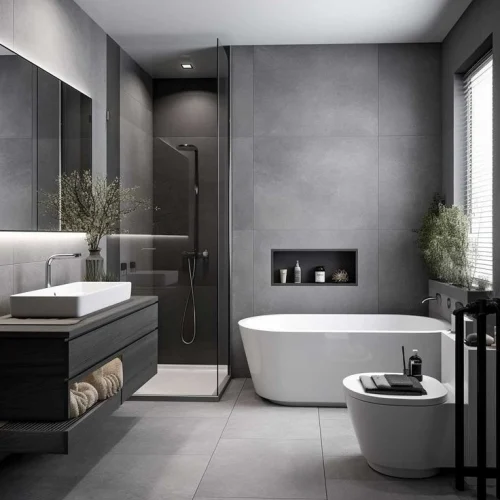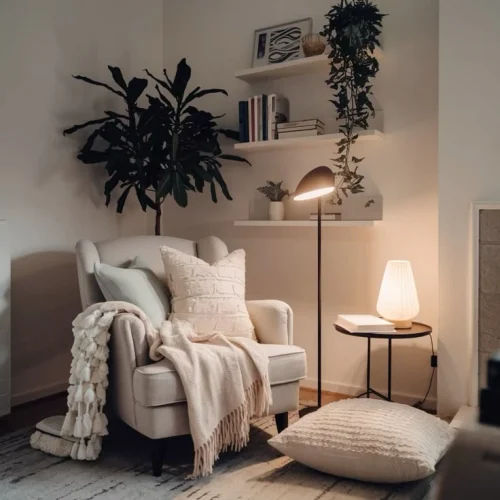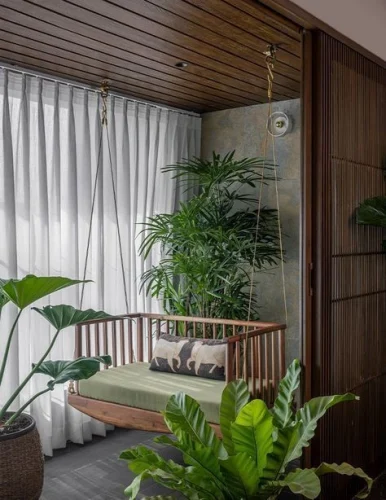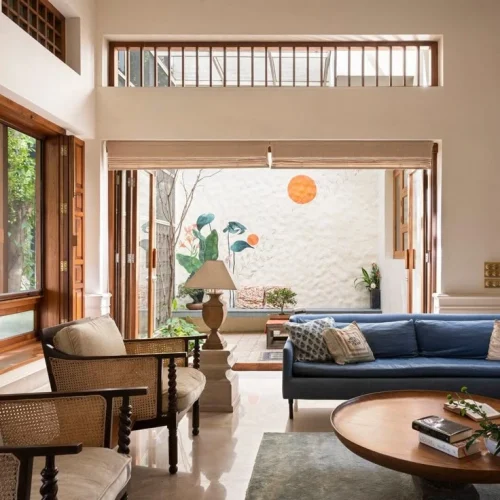
10 Carpet Design Tiles Ideas to Give Your Home an Amazing New
June 4, 2025
Glass Interior Design Ideas for Modern Indian Homes
June 5, 2025Smart multi-generational home design ideas to help families of all ages live peacefully under one roof. Room-by-room ideas.
Introduction
In India, we live not just with our partners or kids, but also with parents, in-laws, and sometimes even grandparents under one roof. It’s warm and emotional, but let’s be honest, a bit chaotic, too.
One person wants the space to be silent, another wants the TV on full volume. One sleeps late in the night, and the other sleeps early to wake up for prayers at 4 AM. One makes the whole room a huge mess, and the other demands a neat & clean surrounding. And in the middle of this, you are trying to work, cook, and… breathe.
This is why multi-generational home design matters. It’s not about a bunch of people living in a big house; it’s about creating a home that’s practical, safe and peaceful for every age group. A home design where each person’s needs are considered.
Also read: Openable window designs for a modern home.
Key Principles of Multi-Generational Home Design
The key principles of a good multi-generational home are
- Accessibility and mobility
- Privacy and togetherness
- Flexibility and adaptability, and
- Storage
Room-by-Room Multi-Generational Home Design Tips
Let’s see how to make your kitchen, bedroom, bathroom, living room, and balcony elder-friendly spaces and child-safe.
Bedrooms
Let's see how to make bedrooms elder-friendly, child-safe and adult-comfortable in a multi-generational home.
For Elders
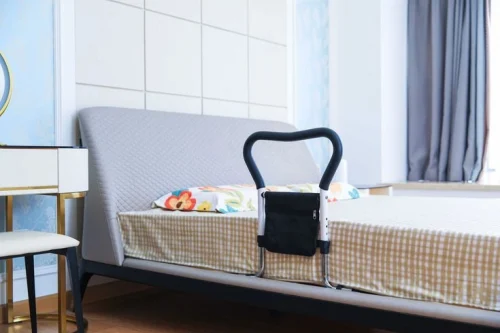
- Place the bedroom on the ground floor, close to the bathroom and living space.
- Use a bed with a firm mattress and a comfortable height. Make sure it’s not too low.
- Have a grab bar or a support rail next to the bed if needed.
- Keep night lights or sensor lights near the path to the bathroom.
- Place switchboards and charging points at bedside height.
- Add a basic chair or recliner, especially if an attendant or visitors sit with them often.
- Do not keep any stools, rugs or decor that could trip them.
For Children
- Use low cots or floor beds for children. They are easier to access and safer when they fall.
- Add open toy baskets and low shelves for books, clothes. These child-safe interiors help them to access their things on their own.
- If your children have to share their room, add zoning tools, like rugs, curtains or tall shelf dividers.
- Avoid glass decor, floor lamp or anything that can be easily toppled.
- Use soft lighting, like foam tiles or cotton dhurries, for playtime.
For Adults
- Ensure your room is located away from the TV zone or kitchen. So that you can rest and work without any disturbance.
- If you work remotely, have a corner with a desk, plug point, and task lighting.
- If you have a shared wardrobe, have storage zoning, so that you don’t have to dig for your clothes.
- If it’s the master bedroom, have lockable drawers to store personal or work items away from shared hands.
Kitchens
The kitchen is where the whole family meets for meals, medicines, etc. A well-planned kitchen makes daily life much easier.
- Have separate storage options for regular cooking items, special diets (diabetic, baby food, elder-friendly snacks), shared snacks or tiffin's, medicines, etc.
- Have open pull-out trays or baskets for rice, onions, etc., as this will be helpful, and elders don’t need to bend.
- Install soft-closed drawers to reduce noise and pinched fingers.
- Use child locks on drawers with knives, detergents, or glass items.
- Place frequently used items in open racks, as they can be accessed easily by anyone, even guests.
- If the dining table is small, use a breakfast counter or a wall-attached drop-leaf table.
Bathrooms
Bathrooms need to be safe, accessible, and low-maintenance. The right design makes it comfortable for elders, safe for kids, and easy to clean for adults.
- Have anti-skid tiles, grab bars, handheld showers, a tall commode or western-style WC with arm support and a space for a helper stool or chair for elders.
- Have a plastic potty seat, portable stool to reach the sink, for kids.
- In this kids’ bathroom, avoid glass shelves or breakable dispensers. Places latch high so toddlers don’t accidentally lock themselves in.
Also read: 7 stunning false ceiling design ideas for every room.
Living Room
The living room is where everyone gathers and shares their space.
- Have a firm armchair with a footrest and soft lighting for elders. A bean bag for kids and a corner with a study desk, reading lamp or a small shelf for adults.
- Zone the shared living layouts so that no one clashes with one another.
- Avoid glass furniture or sharp table edges in the living room, as they are unsafe for both elders and kids.
- Add fabric or cushioned surfaces, like rugs, curtains or even soft wall hangings, to absorb sound and reduce echo.
Balcony
Balconies often go unused or become laundry corners. But they are one of the few spaces where everyone can relax and have some alone time.
- Add railings with safety grills and slip-resistant mats.
- Place foldable chairs or a small swing for elders to sit comfortably.
- Use artificial grass or rubber mats for kids to crawl on or sit and play.
- Grow easy-care plants like tulsi, aloe vera or greens.
- If space permits, keep a floor cushion and book basket for a quiet, peaceful time.
Smart Technology- A Part Of Multi-Generational Home Design
You don’t need a smart home filled with gadgets. Just a few small additions help a lot. Especially when multiple generations are under one roof.
- Have voice-controlled switches, smart remotes, night lights that turn on when someone walks, and emergency alert buttons in the elders’ room.
- Use app-controlled screen time, motion sensor lights near beds or bathrooms and secure Wi-Fi zones for kids.
- You can also use a shared family reminder app for birthdays, groceries and medicine refills.
In a home with both elders and kids, the little things make a big difference. Like windows that open easily or doors that keep out the heat and noise. GreenFortune’s uPVC windows and doors are built for this kind of everyday living. They’re simple to use, safe for all age groups, and help keep your home calm, quiet, and comfortable.
Explore our uPVC windows and doors!
Also read: Trending door with window designs in 2025.
FAQs
1). What are the advantages of multi-generational homes?
The advantages of multi-generational homes are shared responsibilities, better emotional support, and cost savings. It helps with child care, elder care and daily household work. It also strengthens family bonds.
2). What are the disadvantages of multi-generational homes?
The disadvantages of multi-generational homes are a lack of privacy, clashing routines, and a high chance of daily arguments. You can feel that the space is limited and your personal needs are ignored if not planned well.
3). Should I plan a multi-generational home design for a nuclear family?
Yes, planning a multi-generational home design helps nuclear families, too. It prepares your home for future needs like ageing parents, growing kids or guests. A flexible layout is always useful.







